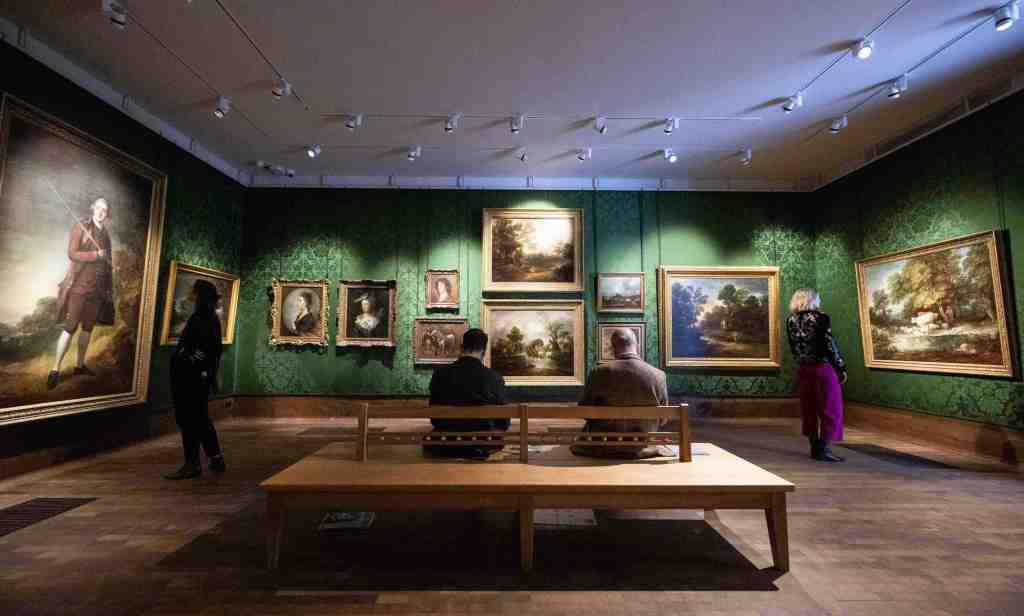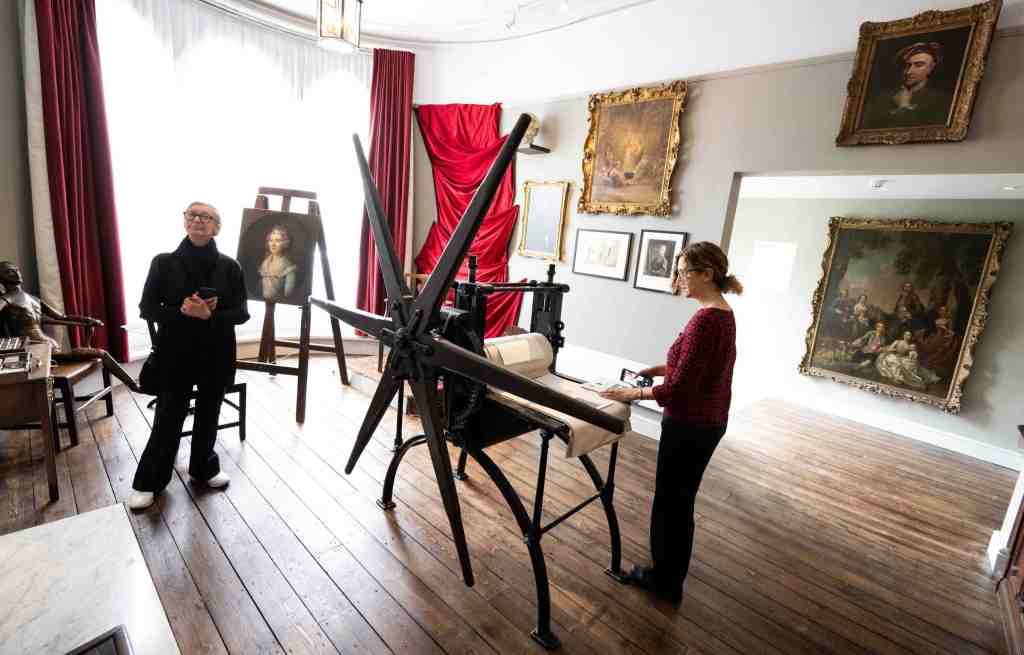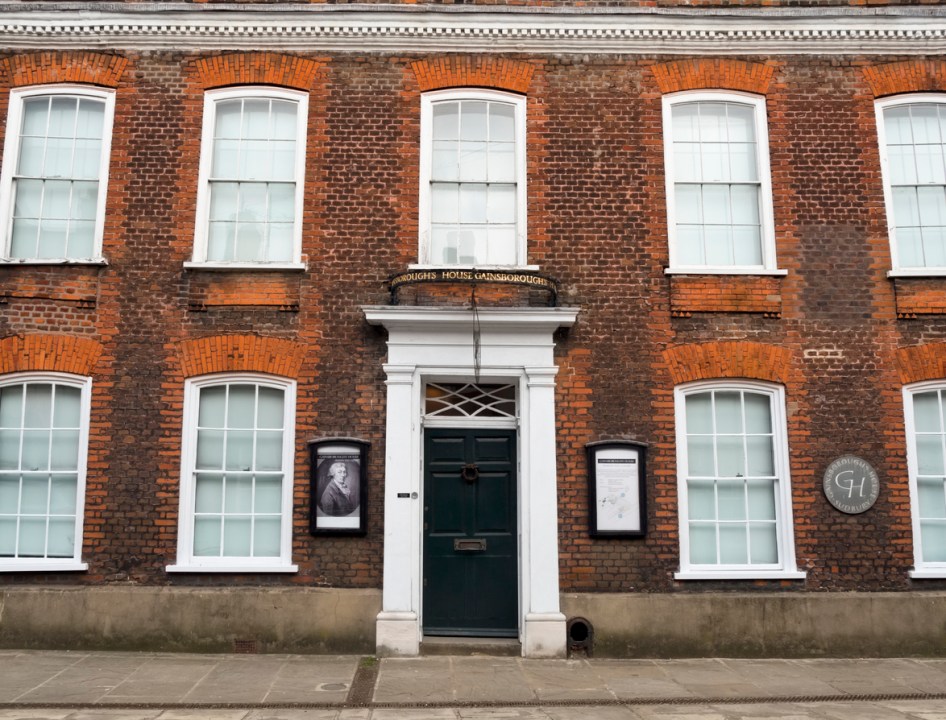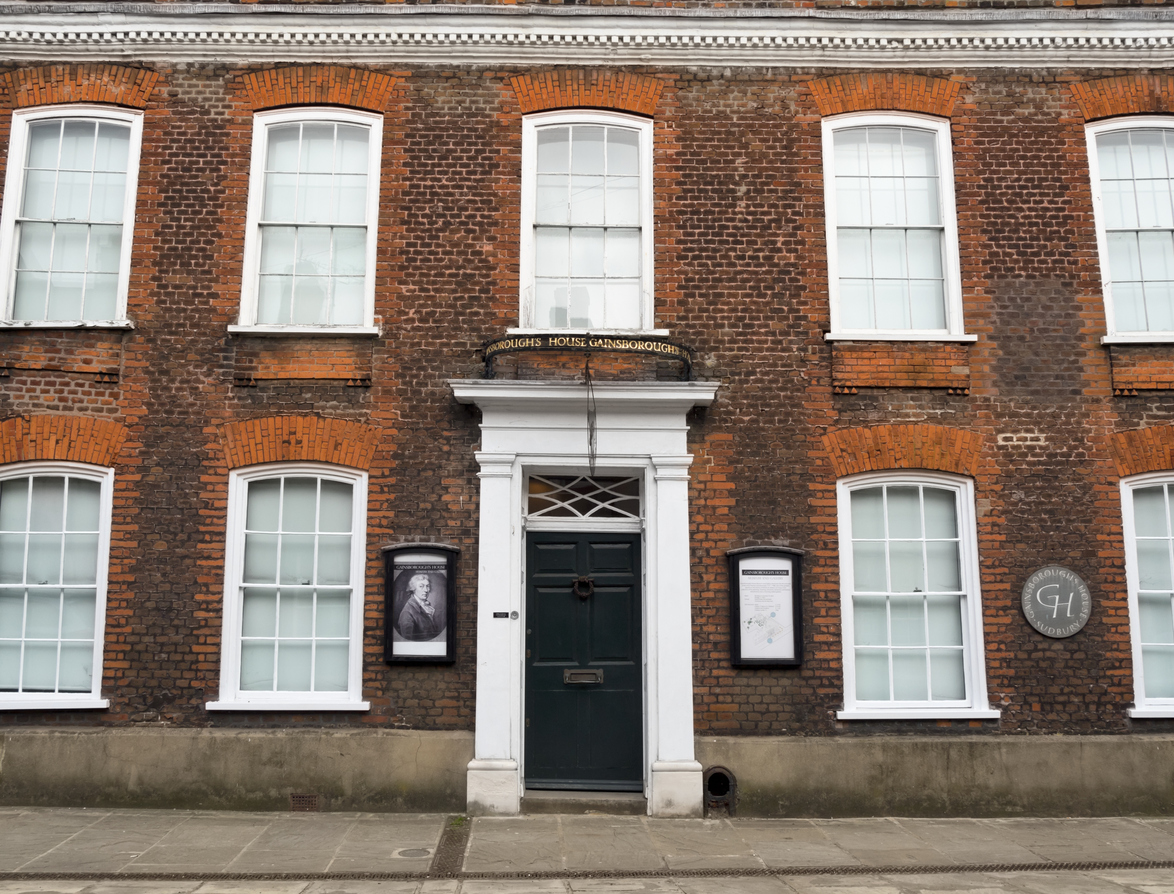From the road Gainsborough’s House looks like it could be a thoroughly plausible restaurant in a town like Godalming or Chertsey, the sort of place where a prawn cocktail costs £15 and comes with most of a lemon in a white gauze satchel on a separate plate. The stout two-storey structure is Georgian, red brick and has a front door flanked by a pair of handsome Regency windows. Glance up the neighbouring side street, however, and you immediately see that something extraordinary has happened: there’s an enormous, ultra-modern, industrial-looking extension to the rear in brick and flint. Is it a carbuncle? I’ll leave you to decide, but yes, I’m confident it’s the sort of thing that would make King Charles choke on his fountain pen.
What’s inside is all that matters here, though. For thanks to a £10 million transformation (around half of which was coughed up by the general public through the National Lottery), Gainsborough’s House, the building in Sudbury in Suffolk where Thomas Gainsborough was born in 1727, has been renovated and trebled in size. And as a result, it’s been magnified into a site of national cultural significance.
At the heart of the new building is a large rectangular room, like a miniaturised salon snatched from the National Gallery, lined in exquisite silk damask (which happens to be woven in the town) in British racing green. The silk shimmers with possibilities, pleasing the retina with every glance. Hung against this backdrop are no fewer than 20 Gainsboroughs, which together, I believe, stake his claim to be Britain’s most significant artist. If you don’t believe me, go and see it for yourself.

In his landscapes, where sheep, cattle and a herdsman shelter under a tree by a pond, or a wagon is drawn by donkeys through the undulating Suffolk countryside, or a dog in the foreground laps at the pond, you realise you are in the foothills of a Turner or Constable, artists who were both born the decade before Gainsborough died in 1788. Indeed in their dreamy light, in their lush woodlands, their very perspective, Gainsborough’s landscapes are immediately evocative of the artists who followed him, and continue to dominate Britain’s sense of artistic self.
As well as all this, Gainsborough’s landscapes also offer a unique, lost vantage point upon Britain’s vanished pre-industrial landscape, since his career ended just as the industrial revolution began. In human terms, there’s also a quiet radicalism in Gainsborough’s decision to make ‘peasants going to market’ or a wistful old yokel with his donkeys the stars of the show, a radicalism which also prefigures the demotic outpourings of the Impressionists and artists of the 20th century, in addition, of course, to Constable and Turner, who both followed suit.
When you’re here you will probably focus for the first time upon this great, unsung hero of British art, a man who is obscured by the artistic giants who followed him
Looking backwards into the pleasing milky, golden skies of Gainsborough’s landscapes you can also sense the presence of artists such as Claude, the 17th century French landscape artist. In Gainsborough’s rural scenes, especially his figures, you meet the ghost of Rubens, the Flemish master who trained in Italy in 1600 and was himself heavily influenced by Titian. As a result Gainsborough, one realises in this room, provided an artistic umbilical cord between the Florentine high Renaissance and the giants of what would become the English Romantic tradition.
And, of course, no one does Pomeranians or periwigs like Gainsborough. In the same way that Constable came to do, Gainsborough spent his career painting portraits to make his living. So, note the delicious wrinkle in the silk stocking of the flute-player in a portrait of three local gentry – and as well as with their cuffs, buckle shoes and brocade coats you see expressions of certainty, wisdom and doubt. Aside from a magnetic self-portrait – on loan from the Tate – there’s also a portrait of the artist’s daughter, Molly, which shows his talent: she is astonishingly lively and fizzes with reflected affection. A few yards away, we then have Harriet, Viscountess Tracy, in profile, imperious and impregnable in plate mail of silk.
And that’s the point, when you’re here in a place which can proudly claim to have the world’s largest collection of Gainsborough’s work: you see all this stuff together; and in this fine example of artistic narrow-casting, you – like me – will probably focus for the first time upon this great, unsung hero of British art, a man who is obscured by the artistic giants who followed him. But being here you also realise that those giants were sitting on his gigantic shoulders.

Once you’ve enjoyed the Gainsborough Gallery, as this room is known, you can head into the house itself, part Gainsborough reliquary, part art gallery, part Georgianised Elizabethan mansion. In here you’ll see Gainsborough’s study for Rubens’s ‘The Descent from the Cross’, and upstairs you’ll see personal items, including the watch and wife’s wedding ring belonging to John Constable, on loan from his family. Among these personal effects is a sculpture of a horse made by Gainsborough which Constable, another Suffolk man don’t forget, bought and, I’m told, cherished for life.
In the room adjacent there’s a harpsicord, and portraits which include one of the actor-manager David Garrick, who leans towards you looking every inch a matinee idol, a Regency Richard Gere in his pomp. Next to Garrick is a small landscape – ‘Hilly wooded area’ – on loan from the Schorr Collection, in which the imperfect English landscape is again rendered idyllic through the particular prism of Gainsborough’s genius. The only cloud here is that 250 years later, the rustic setting in question is doubtlessly now an Asda, or a pointless industrial park on the outskirts of Ipswich.
But don’t let that put you off. Go to Sudbury. Go to Gainsborough’s House. Gaze upon its incredible treasures and bask in the light of Gainsborough’s ineluctable vision. And when you do emerge again, from the damask and the divine, on to the high street in Sudbury and glance back at the plausible-looking provincial restaurant with its enormous extension, you’ll know. You’ll know that you’ve been in the presence of a man who quite clearly was the greatest artist Britain has ever had. And then it’ll probably be time for a prawn cocktail in a fluted glass with most of a lemon in a gauze satchel on separate plate. Unless you’re a vegan, in which case, good luck to you.







Comments